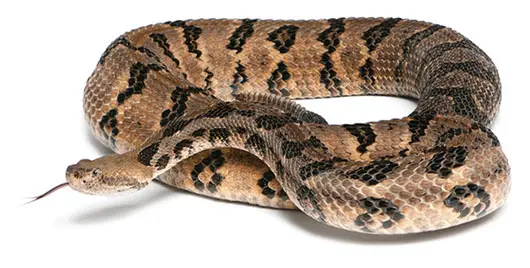Wilderness Safety: Identifying and Treating Venomous Animal Bites
By Mr. Andrew Hellerstein, Staff Writer
Are you afraid of snake bites? That fear is perfectly normal. Snakes cause more than eight thousand deaths in the United States and more than 100,000 deaths around the world every year. Spiders and other bugs can also injure people with their bites and stings, and even kill people in rare cases, but that is no reason to stay indoors. There are many ways to treat venomous wounds, ranging from powerful antivenoms to basic at-home treatments. If you find yourself on the receiving end of a nasty bite or sting, take the following advice:
First, call 911. If you have been bitten by a venomous animal, you should immediately call for medical assistance. Even nonlethal venoms can trigger a serious allergic reaction, and bites from certain species are extremely dangerous and must be treated as soon as possible. Some venoms are slow-acting and will not cause immediate symptoms, so do not assume that you are in the clear just because you feel fine.
Second, identify the animal that bit you. If you are bitten by a venomous animal, try to identify its species. If an antivenom is deemed necessary, your medical responder will need to know the animal that bit you to select the correct treatment. Write down details you see on the animal’s body or take a picture of the animal with your cellphone, if possible.
Snakes
Common North American venomous snakes include the following three examples:
- Rattlesnakes — Rattlesnakes are known for the rattles at the end of their tails, which are used to make a distinctive sound when threatened. Rattlesnake bite symptoms include numbness, nausea, weakness, and breathing difficulties.
- Copperheads — Copperheads have a copper-red head and distinctive, hourglass-shaped marks along their bodies. Their venom can cause swelling, bruising, and blistering near the bite wound, and severe pain. Other symptoms of a copperhead bite include vomiting, numbness around the face and limbs, and breathing difficulties.
- Cottonmouths (water moccasins) — Cottonmouths or water moccasins show their bright white mouth when threatened. The symptoms of a cottonmouth bite are similar to other snakebites and include severe pain and swelling, numbness, and difficulty breathing. The bite can also cause skin discoloration.
Treat a snakebite by following these steps:
- Call 911, then wash the bite with soap and water.
- Keep the bitten area still and lower than the heart.
- Remove all rings, watches, and constrictive clothing around the affected area in case of swelling.
- Cover the area with a clean, cool compress or a moist dressing to ease swelling and discomfort.
- Monitor breathing and heart rate.
- Keep track of when the bite happened so that you can tell emergency staff if needed.
- Draw a circle around the affected area and mark the time of the bite and initial reaction. Redraw the circle around the site of injury at a later time to mark the progression over time.
- Tell emergency staff what the snake looked like, its size, and the type of snake, if known.
- Do not apply a tourniquet or try to suck the venom out of a snakebite. Real-life snakebite situations are not like those in a Hollywood movie.
Spiders and Bugs
Common North American deadly insects include the following
three examples:
- Black widow spiders — Black widow spiders can be identified by the infamous red hourglass marking on their abdomen. Black widow spider bite symptoms include pain and swelling, severe cramping, and vomiting.
- Brown recluse spiders — Brown recluse spiders can grow to the size of a penny and can be identified by the dark, violin-shaped marks on their thorax and their three pairs of eyes. Spider bite symptoms can start with mild pain and progress to fevers, chills, and body aches. A deep blue or purple area with a red ring may develop around the bite location.
- Arizona bark scorpions — Arizona bark scorpions are light brown and live in the Sonoran Desert of the Southern United States and Mexico. Scorpion stings can cause serious pain, breathing difficulties, and muscle spasms.
Bug bites, including black widow spider bites and brown recluse spider bites, are rarely fatal. However, you should see a doctor immediately if you have been bitten by one of these spiders or if you are unsure if the bite was from a dangerous spider. Scorpions and other bugs have venomous stings, but they rarely cause life-threatening injuries. If you develop severe pain or trouble breathing following any kind of bug bite or sting, call a doctor immediately.
Treat a bug bite or sting by following these three steps:
- Clean the wound with soap and water.
- Apply a cool compress to the bite for fifteen minutes every hour and lift the wounded area if you can.
- Take over-the-counter medications for pain, such as ibuprofen, or antihistamines, such as Benadryl, to help alleviate itching symptoms.
Prevention
To avoid getting bitten, follow these three tips:
- Be cautious in areas where snakes and spiders may lurk. Snakes and spiders can hide in tall grass and brush. Try using a stick to spread the grass in front of you to reveal potential threats. Spiders may also hide in boots, hats, and other pieces of clothing and will attack when the clothing is put on.
- Wear safe clothing like thick boots, baggy, long pants, and long sleeves to stop a bite or sting from penetrating through your skin.
- Do not pick up or touch a venomous animal. They generally only attack if they feel threatened, so leave them alone.
Venomous animals are certainly scary, but with the information provided, you can be ready for any of their bites or stings. If you stay aware and take reasonable precautions, you will have little to fear from these infamous critters.






